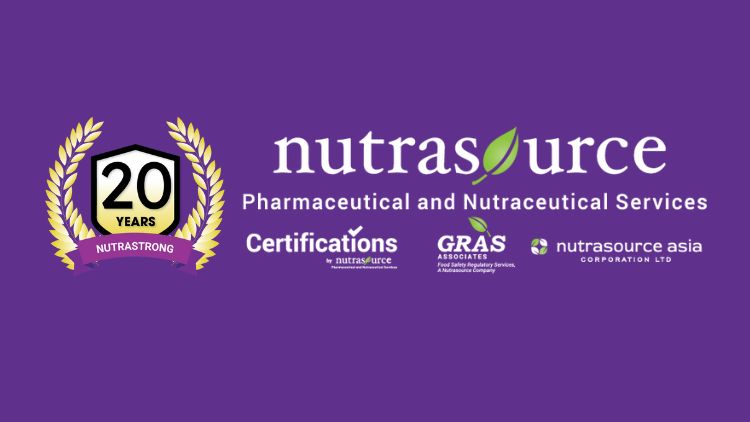Promotional Features
Reaching the Summit for Successful North American Supplement Launch
North Americans want your dietary supplements but you likely need guidance to navigate the complex terrain to successful market launch in the US and Canada.
Traditional Eastern health practices and products are booming in the North American marketplace, especially among health-conscious consumers. Canadians and Americans are responding with zeal to Asian-inspired foods and herbal supplements.
Asian dietary supplement manufacturers can reap bountiful expansion opportunities in North America.
Here’s why. Market research points to incredible gains in health product sales among North American consumers. For example, the size of the US dietary supplement market was nearly USD $37.4 billion in 2016, according to Grand View Research. Globally, according to Zion Market Research, the dietary supplement market reached $132.8 billion in 2016, and is expected to jump substantially to $220.3 billion by 2021.
Zion Market Research’s report also notes that Asia Pacific (“APAC”) has led the global supplements market and data suggests this dominance will continue. APAC supplement manufacturer success, says the market research firm, is fueled by large-scale product availability and growing consumer awareness – APAC is responsible for more than 30% of the 2016 volume of global dietary supplement sales.
This bloom of consumer acceptance of APAC supplements and foods serves as an exciting impetus to explore westward expansion for your dietary supplements in North America.
Launching into any new global region or nation necessitates a full understanding of how your product or ingredient can be marketed, and how your science may (or may not) hold up.
Successful market entry into Canada and the U.S. is like climbing a majestic mountain. But don’t let that be daunting – done properly, it is worth the effort and many companies are reaping big rewards.
“From our perspective, we have seen roughly a doubling of inquiries from supplement companies in Asia over last 18 to 24 months. Ingredient companies and finished product manufacturers from Asia are increasingly desirous of gaining access to the U.S. and Canadian markets”, relates William Rowe, President and CEO of Nutrasource, a full-service market-entry consultant and contract research organization (CRO).
Rowe emphasizes that the North American market is still the most lucrative in the global nutrition space.
Climbing the Summit
As you may already be aware, it isn’t enough to simply set up a headquarters in the West and hire a sales and marketing team. As dietary supplements have shaken off the stigma of being inferior to OTC or prescription drugs and are now commonly used by consumers as part of overall health regimens, the regulations, labelling and manufacturing requirements have become more rigid, more complex.
Before marketing your product, seek to work with a consultant who can act as a knowledgeable guide to lead you safely to the summit of market launch success.
There are several factors to address when launching a new or existing dietary supplement in the U.S. and Canadian marketplace.
Classifications and Claims
First, you need to confirm the product’s regulatory classification: is it (or will it be) a dietary supplement, food, beverage, or pharmaceutical? This is answered by your product claims, ingredients, matrix, and in some cases, public perception and history of use. If you are a supplier, this is answered by your claims and intended use.
Label claims are the main attraction for North American consumers – they seek products to resolve or address health concerns or issues. Problems arise when products’ claims are not sufficiently substantiated by adequate scientific evidence, which may leave its manufacturer at financially burdensome regulatory risk. The U.S. FDA and Health Canada continue to revise regulations, and ignorance of the changing laws is no excuse not to keep up. This is where regulatory and scientific consultants can continue to guide you in any changes as they arise.
Depending on the claims you want to make and your target audience, your product may require a systematic literature review of published third-party studies, followed by pre-clinical toxicology testing, and potentially, human clinical studies.
A literature review is key in revealing the safety, efficacy, and claims potential, as well as directing proper regulatory/labelling compliance for your product or ingredient. The resulting dossier will reveal any research gaps that require new evidence to be generated. This evidence is typically in the form of clinical trial results from well-designed studies to substantiate your claim(s) and help clarify product classification.
Navigating Regulations
The supplement market is a broad category including herbal products, vitamins/minerals, proteins, essential fatty acids, probiotics, enzymes, and more. These products are generally regulated as dietary supplements in the U.S., and as natural health products (NHPs) in Canada.
To launch in the U.S., your products must meet the criteria of the Food and Drug Administration (FDA). However, they do not require FDA approval before market launch; the FDA monitors products in the marketplace to ensure they are not in violation of the regulations. Depending on the product or ingredient, you may need to obtain a Generally Recognized as Safe (GRAS) approval or New Dietary Ingredient Notification (NDIN).
GRAS applies to any ingredient (eg, herb) intentionally added to a food/dietary supplement. As the food industry continues to grow and new ingredients are being investigated, achieving GRAS status has become more valuable. To obtain GRAS status for an ingredient, you must prove that it is not likely to cause harm when used as intended, which necessitates a full safety review and submission of a GRAS dossier to the FDA.
An NDIN is a notification that must be submitted to the FDA for a dietary ingredient that was not marketed in the U.S. as a dietary supplement before October 15, 1994.
In Canada, natural health products require pre-market approval from Health Canada, which requires a Product Licence and corresponding NPN (Natural Product Number). To obtain an NPN, companies need to submit a Product Licence Application to Health Canada’s Natural and Non-Prescription Health Products Directorate (NNHPD) for review and approval – it must meet the requirements published in the Natural Health Product Regulations.
Showing Efficacy for Claims Substantiation
If the initial regulatory and literature assessment reveals gaps, you likely need to conduct a clinical trial with a plan for more down the road. Working with a reputable and well-established CRO ensures that the research is done properly, with protocols and results that can withstand regulatory scrutiny.
And while it may seem logical to engage in this critical activity before the regulatory strategy is set, clinical trials should be designed and implemented based on the regulatory strategy. Jumping to clinicals increases the risk of investing in a poorly designed study or one whose results are irrelevant.
Sometimes, a supplement company will invest in a clinical trial whose results do not support the intended claims. This often occurs due to poor planning, design, execution, insufficient controls, and inaccurate data analysis and reporting.
A CRO will know which endpoints of the clinical study are recognized for the desired indication, which safety parameters must be addressed, and how to work within the constraints of jurisdictional requirements to ensure the study is valuable for claims substantiation. The bottom line is that working backwards from the product claim, and devoting time and resources to proper strategic planning ahead of time, are essential for an efficient, effective regulatory and clinical strategy. Your CRO can prevent costly and time-consuming changes and delays after a trial begins.
Supporting Safety via Quality Assurance/Analytical Testing
Your product or ingredient must also provide reasonable expectation of safety under dosage instructions appearing on the product label. In the U.S., your product needs to be manufactured according to the FDA’s Good Manufacturing Practices (GMPs) as per Part 111 of 21 CFR for manufacturing, packaging, labelling, or holding operations for dietary supplements.
At least one appropriate test must be used to determine the identity of each ingredient contained in the product. The lot must also be tested for contaminants (eg, heavy metals, mercury), potency, and quantity of active compounds at all necessary points throughout the manufacturing process to confirm that the product maintains quality.
In Canada, the Product Licence holder is responsible for ensuring the quality of their natural health product; this information is required for pre-market approval and thereafter. Health Canada’s Quality of Natural Health Products Guide outlines testing standards for characterization, identification, quantification, microbial and chemical contamination, performance, stability, and more.
Label Review/Creation
Your label is critical component of compliance and transparency, and it is often the deciding factor for purchase. In both the U.S. and Canada, it should be professionally developed, as there are numerous considerations besides ingredient identification, such as Nutrition Facts panel compliance, and ensuring minimum requirements are met for allergen claims, composition and quality claims, health claims, method of production claims, organic claims, origin claims, nutrient content claims, structure/function claims, and more. In Canada, all mandatory labelling information must be included in both official languages (English and French).
Conclusion
When you have completed the necessary steps, you can then have your sales and marketing team create an imaginative launch to your target market. But remember, regulations often change, the market shifts, and the need for strong, high-quality clinical research means investing in quality studies now and in the future. The CRO partner will keep you on top of that summit so you can increase sales and boost market share in North American markets.



